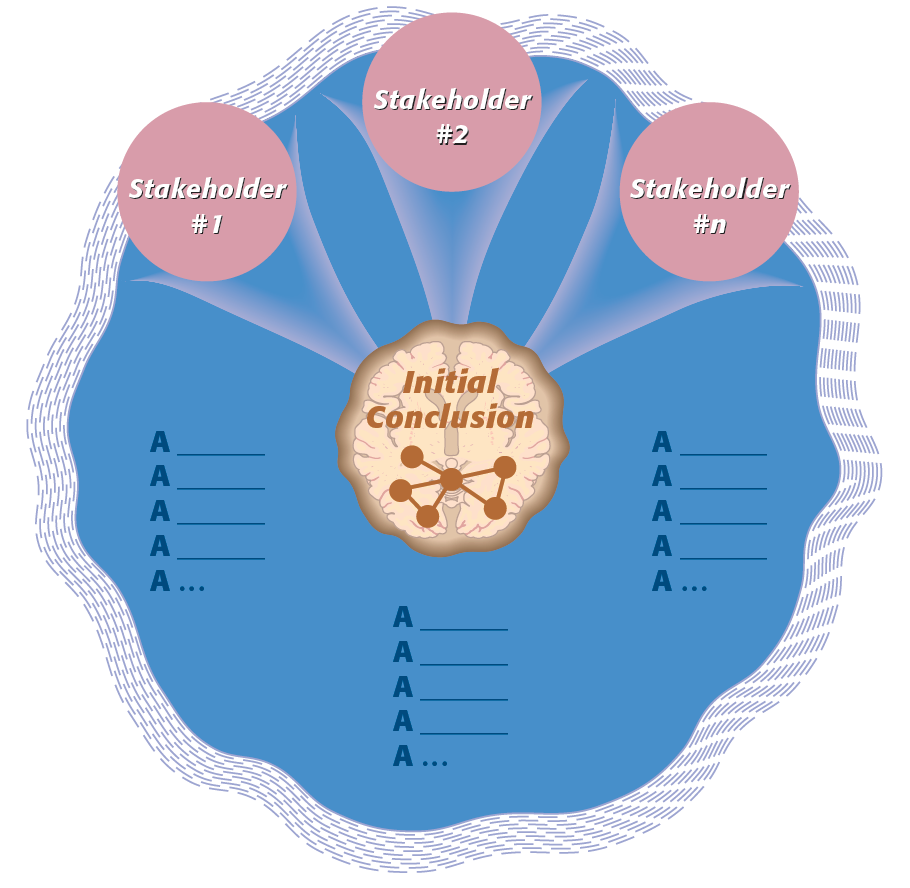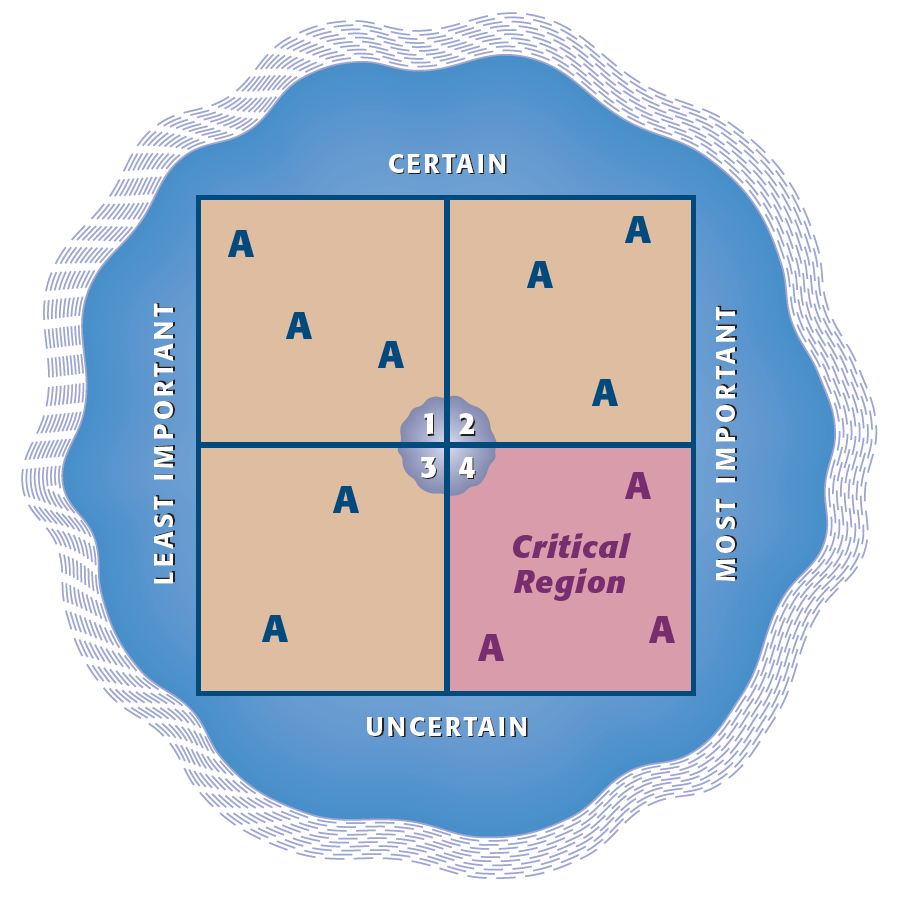06 Jan Assumptional Analysis and Conflict Management
Ralph H. Kilmann, co-author of the Thomas-Kilmann Instrument (TKI)
In the late 1970s and early 1980s, Ian Mitroff and I developed a systematic methodology for uncovering — and then revising — the hidden assumptions behind decisions and actions. This same methodology can provide new ways of thinking about and then choosing the right conflict mode for a given situation.
I define assumptions as all the things that would have to be true in order to argue, most convincingly, that your beliefs are valid and that your actions will be effective. The beauty of “assumptional analysis” is first surfacing all the underlying, often unstated assumptions so you can find out if your assumptions are actually true, false, or uncertain. By seeing your assumptions face to face, you have the chance to REVISE them, which will surely inspire you to change your beliefs or modify your behavior.
Assumptional analysis begins by stating (orally or in writing) your belief or intended behavior: “Using the competing mode is the best way for me to resolve this conflict at this time.” You then write out what would have to be true about each aspect of the situation (the other person or persons, the culture of the organization, the reward system, etc.) in order for you to argue that your choice of mode will be most effective for you and others (including the organization) – both short term and long term.

In most cases, you will surface (write out) from ten to thirty assumptions about all the people (both internal and external stakeholders) to support your behavioral intention. To give maximum support for the competing mode, for example, you would have to assume that the outcome of the conflict is more important to you than to others. You might also have to assume that the culture of the organization actively discourages people from taking the time to develop a more in-depth, win/win solution for all concerned. Moreover, you’d also have to assume (to give maximum support for the competing mode) that there wouldn’t be any unintended consequences from asserting your needs over other people’s needs in this organization.
You then sort all your assumptions according to two distinctions: (1) how important is the assumption to your behavioral intention (most important versus least important) and (2) now that I see my assumption, how certain am I that it is true or false…or perhaps I have no idea if it is true or false (certain versus uncertain). These distinctions result in four categories of assumptions: (a) most important and certain, (b) most important and uncertain, (c) least important and certain, and (d) least important and uncertain. Not surprisingly, the primary focus for this analysis is on the most important assumptions that can negate your best intentions.

By seeing which assumptions are most important and FALSE, you can easily revise them without further discussion or investigation. Indeed, it’s often startling to discover that you were about to use a conflict mode that was solidly based on an assumption you already knew to be false!
By seeing which of your assumptions are most important and UNCERTAIN (since these assumptions are just as likely to be either true OR false), you can now spend some time to investigate the truth or falsity of these assumptions (through further discussion or investigation) — and then revise them, based on what you learn. For example, if I must assume that my needs are more important than others, how do I know that? Maybe I need to ask others outright…rather than make blind assumptions that will surely undermine my choice of conflict behavior.

Bottom line: We are always making all kinds of unstated, untested assumptions about the other people in a conflict situation (including the attributes of the organization itself). By being more aware of our assumptions, however, we can significantly improve conflict management. But since it takes time to do assumptional analysis, we should only use this method when the conflict is very important to resolve — and we, in fact, are right about this assumption!
Kilmann Diagnostics offers a series of eleven recorded online courses and nine assessment tools on the four timeless topics: conflict management, change management, consciousness, and transformation. By taking these courses and passing the Final Exams, you can earn your Certification in Conflict and Change Management with the Thomas-Kilmann Instrument (TKI). For the most up-to-date and comprehensive discussion of Dr. Kilmann’s theories and methods, see his 2021 Legacy Book: Creating a Quantum Organization: The Whys & Hows of Implementing Eight Tracks for Long-term success.




